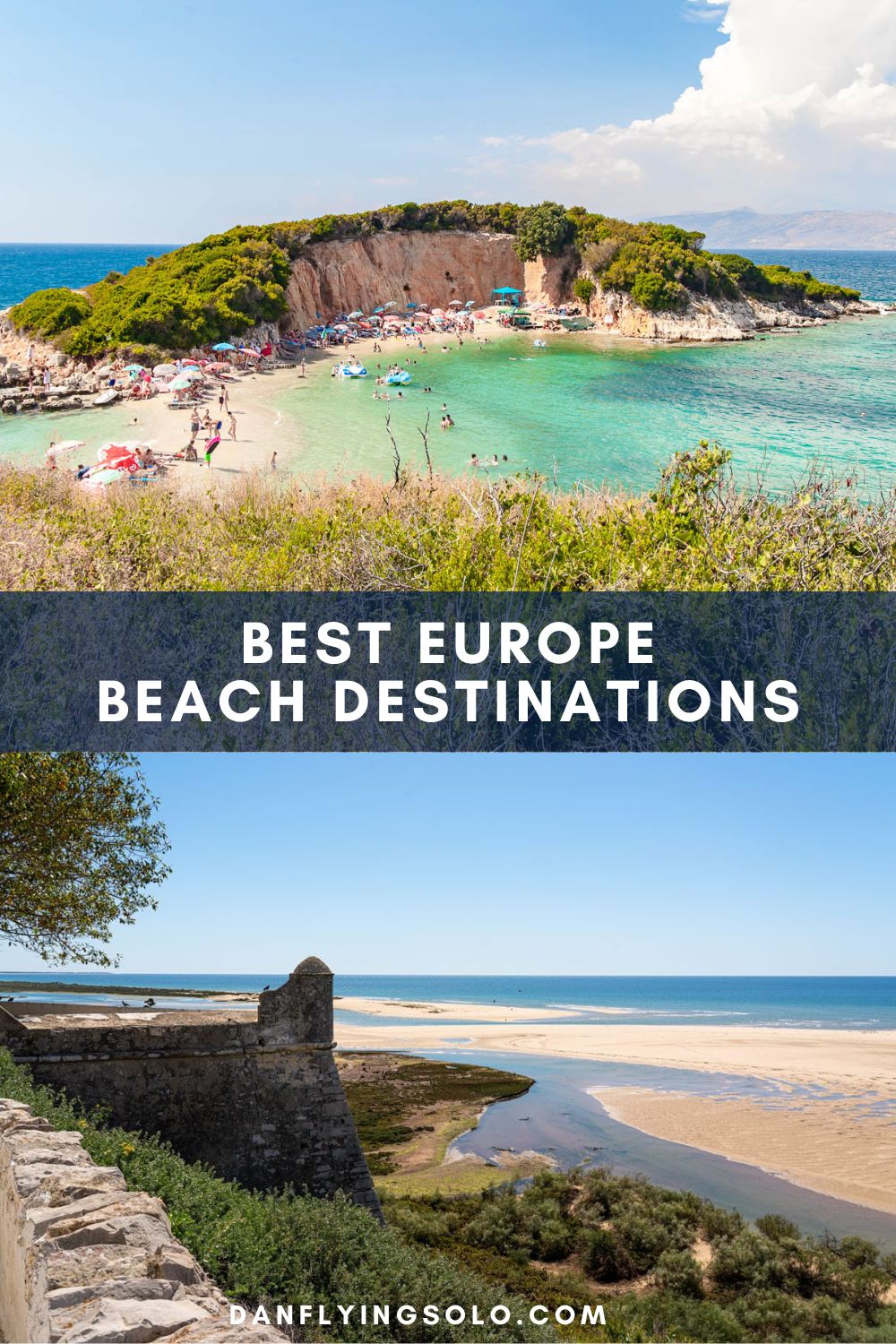For many sun-seekers, a perfect beach vacation in Europe requires just three essentials: a sun-drenched shoreline, shady parasols, and a well-stocked beach bar. However, if you’re like me and enjoy a bit more excitement, you might prefer a European beach location that also offers exceptional dining, scenic hiking trails along cliffs, and exhilarating adventures further inland.
Fortunately, Europe’s coastline is dotted with beach resorts that cater to every type of sun-loving traveler. Whether you’re interested in unique island-hopping through lesser-known archipelagos or embarking on a fossil-hunting journey along the coast, the best beach vacations in Europe can provide far more than just lounging on the sand—if that’s what you desire!
To inspire your next seaside getaway, here are twelve of my favorite beach destinations in Europe, each remarkable for its own unique reasons, to suit whatever type of beach holiday you have in mind.
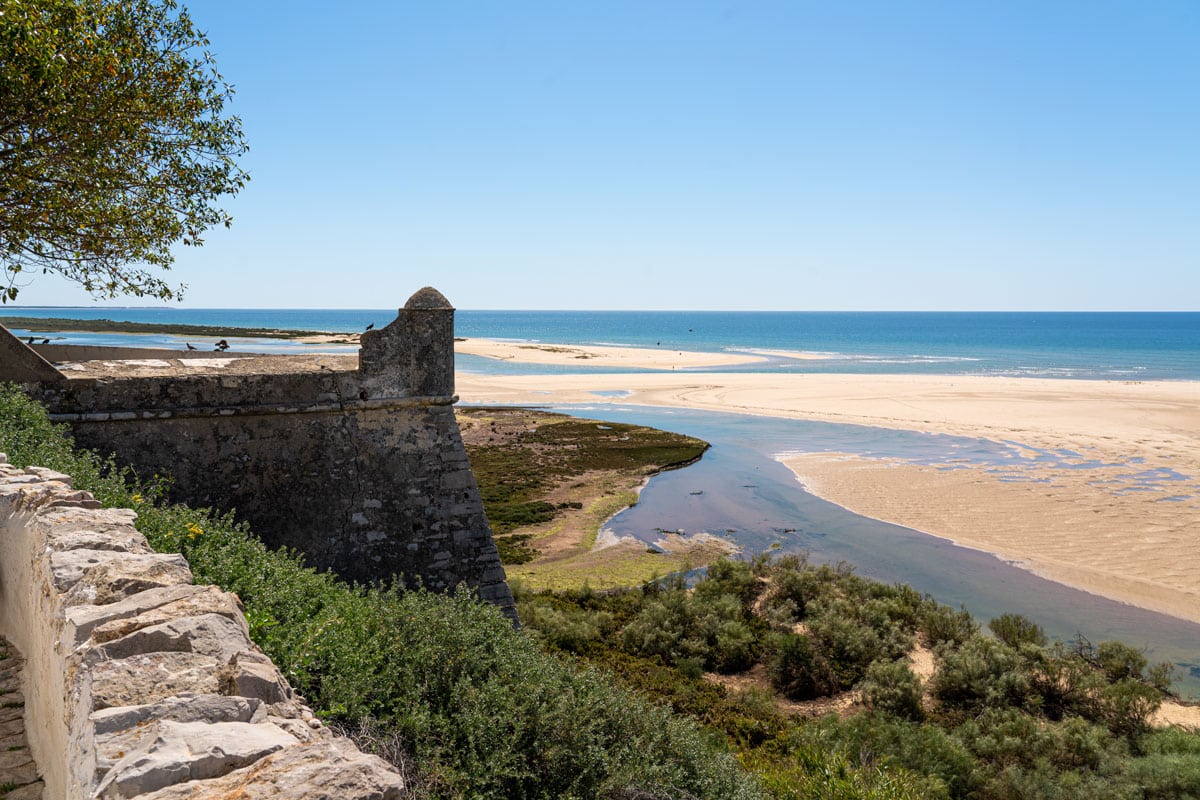
The Algarve, Portugal
Best for: Family-friendly fun, excellent holiday resorts, and cliff-top adventures
Why and when to go? Portugal’s southern Algarve region has long been hailed as one of Europe’s top beach destinations, drawing millions of visitors during the summer months. Even during the off-season (April and October are my favorite months), it remains a fantastic spot for a seaside getaway. Many of the most popular beach resorts, like Lagos or Carvoeiro, originated from quaint fishing villages, offering a more intimate atmosphere compared to busier areas like Benidorm in Spain, all while boasting numerous activities and seafood restaurants. The Algarve’s sea-facing villas make it an ideal choice for family vacations or group trips, as the fresh fish and produce markets allow for an affordable self-catering experience.
Where are the best beaches? Before heading to the Algarve, it’s important to remember that Portugal has an Atlantic coastline, not a Mediterranean one. As such, the waters are often cooler, but during late summer (August and September), temperatures can reach around 24 degrees Celsius. Some of the top beaches in the Algarve include the stunning barrier islands in the Ria Formosa and breathtaking views at Cacela Velha. The small coves near Benagil and Ferragudo are beautiful, as is the long sandy stretch at Praia da Falésia flanked by copper cliffs. For a unique adventure, don’t miss the famous (and often crowded) Benagil Cave—beach vacations in Europe don’t get much more picturesque than this.
Activities beyond the beach? Despite its beach popularity, the Algarve offers plenty to explore away from the coast. Families will appreciate the trio of water parks, while history lovers can visit the museums and historic sites in Faro, Tavira, and Moorish Silves, one of my hidden gems in the region. The windswept west coast is home to one of Portugal’s best multi-day hikes, the Fisherman’s Trail, easily accessible from the panoramic viewpoints at Ponta da Piedade. Be sure to check out the Seven Hanging Valleys Coastal Trail, which showcases some of the Algarve’s most dramatic cliff-top vistas in just a few hours.
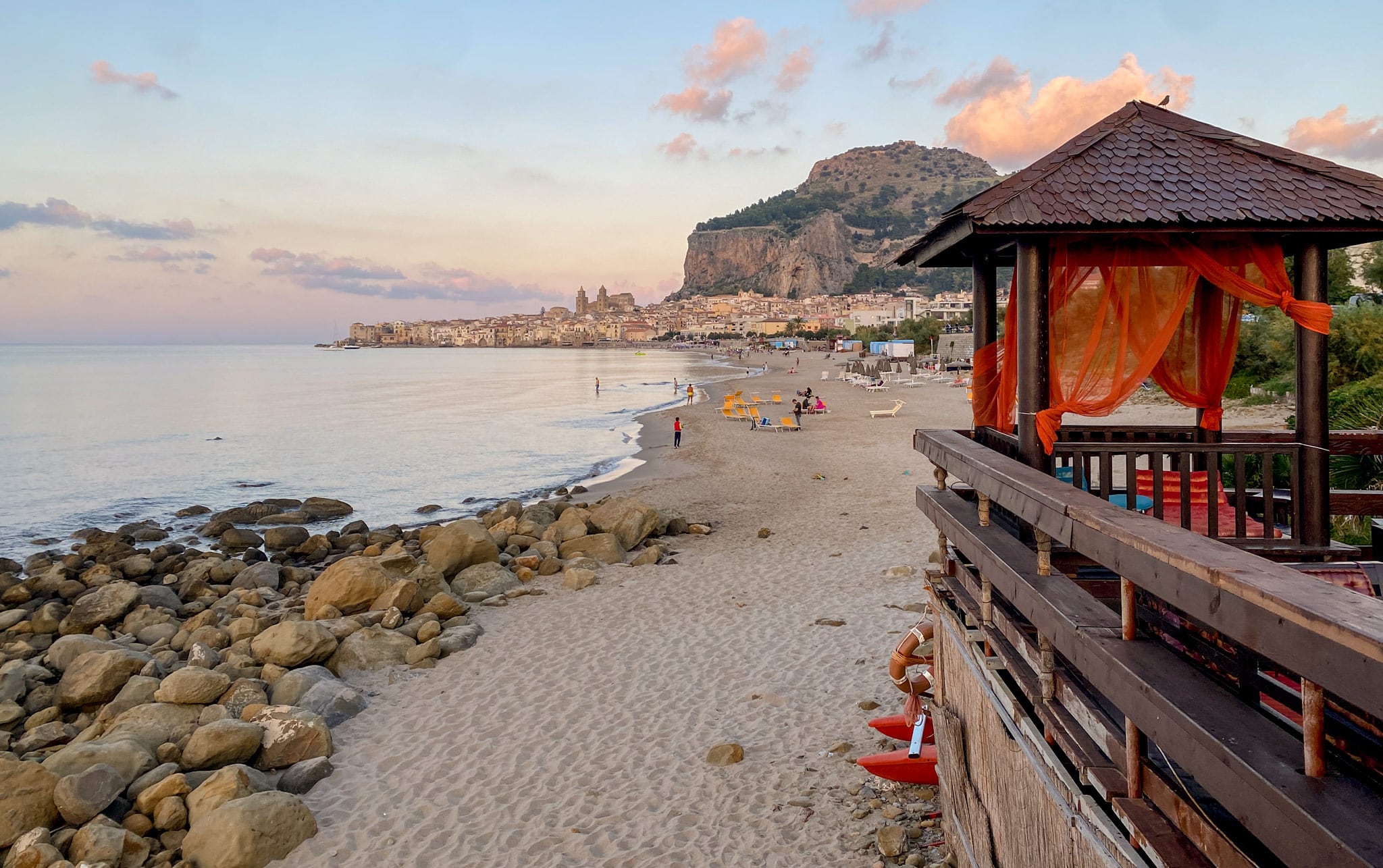

Sicily, Italy
Best for: Delicious cuisine, breathtaking shores, and rich history
Why and when to go? Sicily’s timeless allure and stunning coastline have made it a summer favorite for both Italians and international travelers. Thanks to the renewed attention from the TV show *The White Lotus*, the island is now frequently discussed in travel circles. Luckily, it’s not overly crowded, especially in the off-season when you can enjoy pleasant temperatures (though the waters may be cooler) at more affordable rates. I spent November in Sicily and cherished every moment, mostly enjoying favorable weather. Beyond being one of the best beach getaways in Europe, Sicily serves as a historic treasure trove. It has been home to numerous civilizations—from Phoenicians and Greeks to Romans and Arabs—leaving behind an array of historical sites, including Greek temples and exquisite Roman mosaics.
Where are the best beaches? Sicily boasts an incredible selection of stunning shores, from volcanic island bays to crystal-clear waters. Cefalù, a picturesque seaside town, offers a stunning golden bay supported by rich history, while the Taormina coastline is famous for its stunning Isola Bella sandbar. Don’t overlook the idyllic beaches of the Aegadian Islands or the pebbly shores of the Aeolian Islands, where you can admire the active volcano Stromboli in the background.
Activities beyond the beach? Sicily has countless attractions that don’t require getting your feet wet. Explore the vibrant capital, Palermo, which is filled with historic landmarks, bustling markets, and nightlife. In the more classic city of Catania, visitors can delve into palaces and even hike up Mount Etna, Italy’s famed active volcano. Meanwhile, Syracuse is steeped in ancient history, with its amphitheaters and archaeological museums. I highly recommend visiting Villa Romana del Casale for its stunning Roman mosaics and the Valley of the Temples for Greek wonders. Plus, Sicily is known for its mouthwatering cuisine—don’t miss trying caponata and cannoli, which are as memorable as the beaches themselves.
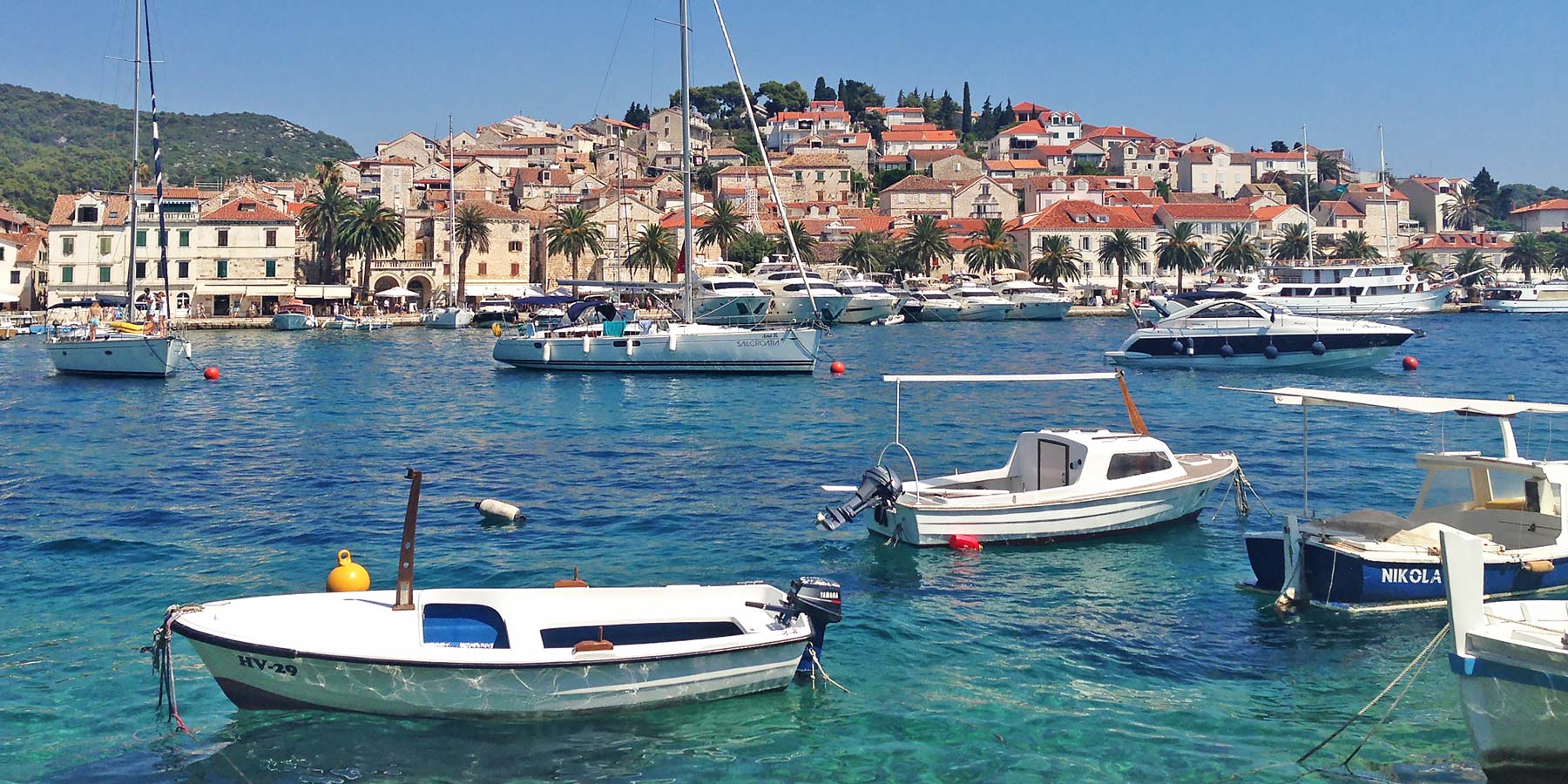

The Unsung Islands of Croatia
Best for: Picturesque beaches and exciting island-hopping adventures
Why and when to go? Croatia is full of hidden gems, and while *Game of Thrones* fans might flock to Dubrovnik, there are countless other breathtaking destinations scattered across the country’s more than a thousand islands and islets. Being a Mediterranean country, Croatia enjoys mild winters; however, to get the best beach experience, plan your visit from spring to autumn. I embarked on my first solo backpacking trip across Croatia in late September and found the beaches delightfully uncrowded and the weather splendid. To truly experience Croatia off the beaten path, consider a sailing trip, which provides stunning coastal views while hopping between islands, typically starting in Split or Dubrovnik and including famed locales like Hvar alongside lesser-known isles.
Where are the best beaches? Croatia is brimming with incredible beaches, sandbars, and secluded coves. Often, the best beach is simply the one closest to you! Nevertheless, specific locations demand attention: the bays surrounding Makarska (south of Split) and those on the Pelješac Peninsula are among the finest on the mainland. Across the islands, the iconic Zlatni Rat on Brač and the beautiful Jagodna beach on Hvar are two that stand out. With so many picturesque spots, it can be challenging to fit them all into one trip, but a week-long itinerary from Dubrovnik to Split allows for leisurely island exploration.
Activities beyond the beach? Croatia’s coastline and its islands are not just about beautiful beaches; there is so much more on offer. On the luxurious Hvar Island, indulge in gourmet cuisine and unique cocktails, while party enthusiasts will find themselves at home on Pag Island. My personal favorite, Korčula, offers a more laid-back experience with its stunning beaches, vineyards, and its charming medieval town. It has blossomed into a popular destination in recent years, but still retains its idyllic charm.
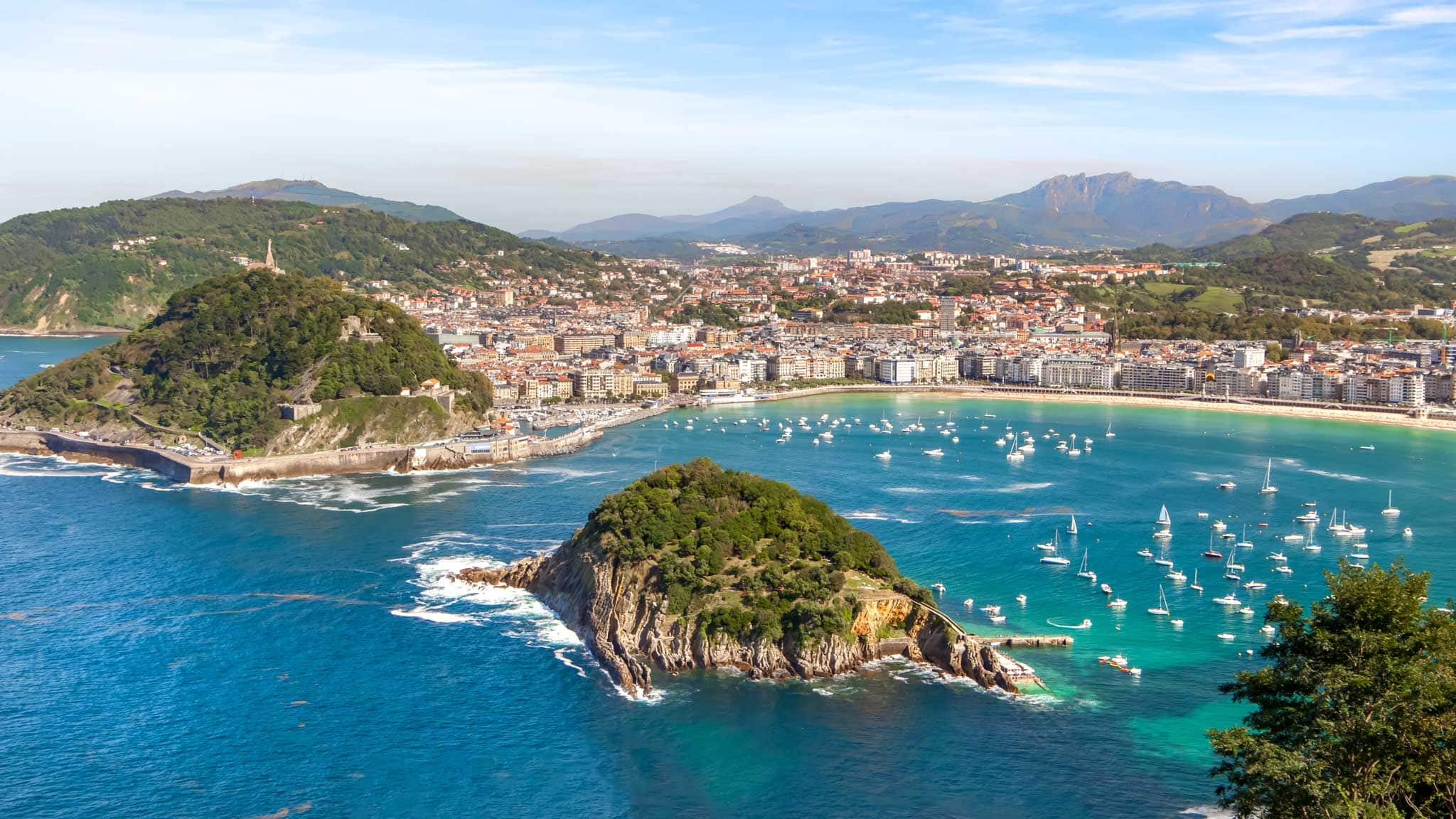

San Sebastián, Spain
Best for: A city beach escape paired with exquisite dining options
Why and when to go? Located in the Basque Country of Northern Spain, close to the French border, San Sebastián offers a unique beach experience compared to its southern counterparts. Lacking the Mediterranean climate, it’s ideal for a seaside retreat from late spring to early autumn. If you prefer stunning coastal views over days spent sunbathing, San Sebastián is a fantastic place for a year-round city getaway. Renowned for its exceptional food scene, San Sebastián is often cited as one of the best cities in Spain—and the world—for culinary delights. The city is famous for pintxos, bite-sized snacks often served at bars, as well as numerous underground culinary clubs and fine dining establishments. The combination of delicious food and scenic bay perspectives makes San Sebastián one of the best beach getaways in Europe.
Where are the best beaches? If you choose San Sebastián as your beach destination, you won’t have to travel far to find a sunny spot to relax. Flanking the historic center are beautiful sandy beaches: La Concha and Zurriola. Stroll along the promenade, revel in fantastic views of the rocky coastline, and enjoy easy access to great dining options, providing the best of both worlds.
Activities beyond the beach? Unlike many popular beach resorts in Europe, San Sebastián is a vibrant urban area with an array of events throughout the year, including the film festival. On a typical weekend in San Sebastián, indulge in the local food culture by hopping between bars filled with signature pintxos or booking a cooking class in one of the city’s culinary societies. For breathtaking views and hiking trails, hike up Mount Ulia or take the funicular to Monte Igueldo, and conclude your day at the San Telmo Museum, showcasing the Basque culture and heritage. If you can spare a week in Spain, consider visiting Bilbao and the picturesque wine region of La Rioja.
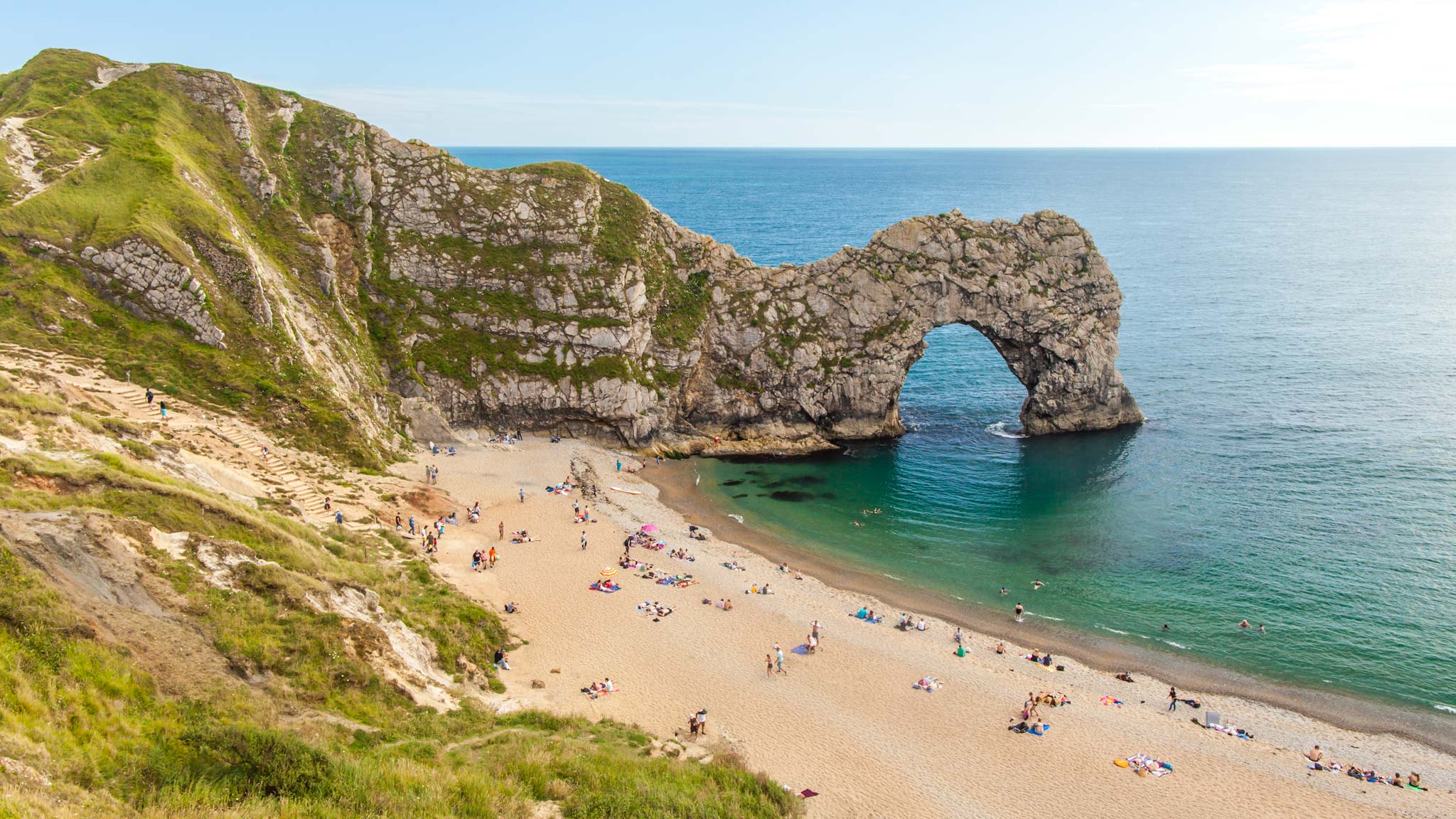

The Jurassic Coast, England
Best for: Coastal hikes, stunning scenery, and fossil hunting
Why and when to go? Many might tout Cornwall as the best coastal destination in the UK—and it’s hard to argue otherwise, except for the summer crowds and high prices—yet a road trip along Dorset’s Jurassic Coast offers a unique beach vacation characterized by fossil exploration and fish-and-chip dinners, rather than tropical waters. This 95-mile stretch of coastline, spanning Dorset and Devon counties, is rich in geological history and dinosaur fossils, which can be found in the cliffs, displayed in local museums, or, if you’re lucky, discovered on the sandy shores. As a native of this region, I can attest to its outstanding hiking trails, cozy pubs, and delightful summer swims.
Where are the best beaches? Like many alluring beach destinations in Europe, the Jurassic Coast features charming bays—just hope for good weather to truly appreciate their beauty. Bournemouth Beach is perhaps the most accessible option, being just two and a half hours by train from London, but it does get busy in the summer sun. Further along the coast, Lyme Regis offers a mix of sandy and pebble beaches, while the stunning Man O’ War Beach is located just beyond the famed Durdle Door stone arch.
Activities beyond the beach? Many popular activities along the Jurassic Coast involve fossils, and learning about Mary Anning, one of the most renowned fossil hunters in history, is a must. You can also enjoy the arcades, gardens, theaters, and museums in Bournemouth or Poole, and explore the scenic coastal hikes around Portland and Old Harry Rocks. This stretch of coastline doesn’t boast typical beach resorts; instead, expect to find charming cottages and inviting B&Bs.
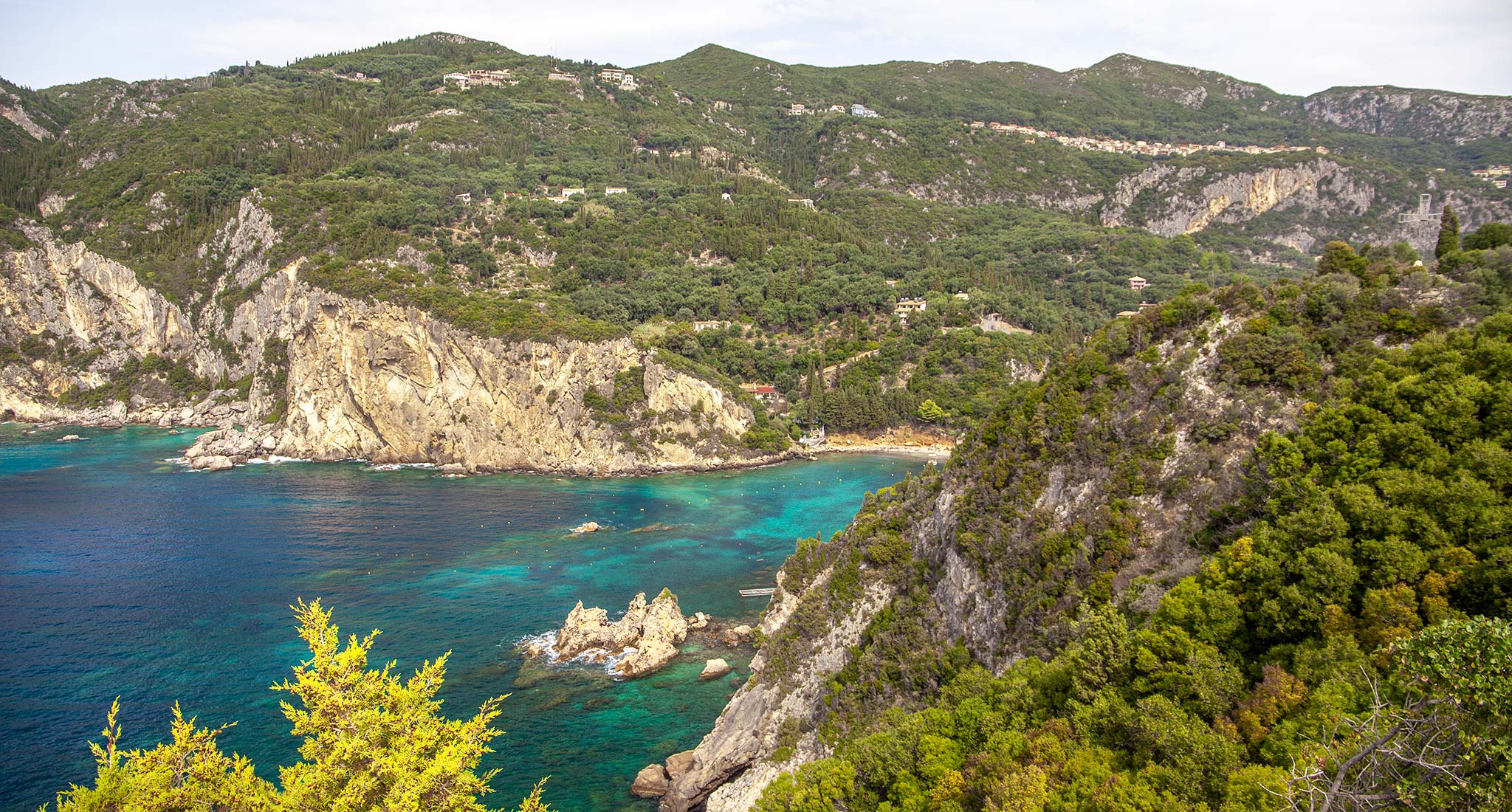

The Ionian Islands, Greece
Best for: Lively cities, island hopping, and stunning beaches
Why and when to go? Greece boasts some of the best beach destinations in Europe, with its seven main island groups making it challenging to select where to go. Personally, I prefer the Ionian Islands for various reasons: they tend to be less crowded than the Cyclades, and I enjoy the beaches here more than the pebbly or volcanic options found in places like Santorini. Additionally, the Ionian Islands are rich in culture and history, especially Corfu, which features a UNESCO-listed Old Town, museums, and archaeological sites to explore during your non-beach days.
Where are the best beaches? If you’re searching for top beach resorts in Europe, look no further than the Ionian Islands. They offer well-developed infrastructure, luxury hotels, and budget-friendly accommodations all within a short distance of stunning beaches. Navagio Beach on Zakynthos is the most iconic, known for its stunning aerial views, while Plakes Beach in Paxos, Makris Gialos on Kefalonia, and the picturesque coves at Porto Timoni on Corfu are equally noteworthy.
Activities beyond the beach? Each of the Ionian Islands offers plenty of water sports and tours to keep you busy. For a more culturally rich beach escape in Europe, consider Corfu, where you can wander through the lively and picturesque Old Town, visit museums focused on Asian and Byzantine Art, archaeology, and folklore. Don’t miss the Achilleion Palace and the Venetian fortress for a break from the sun, and indulge in the island’s delectable cuisine.
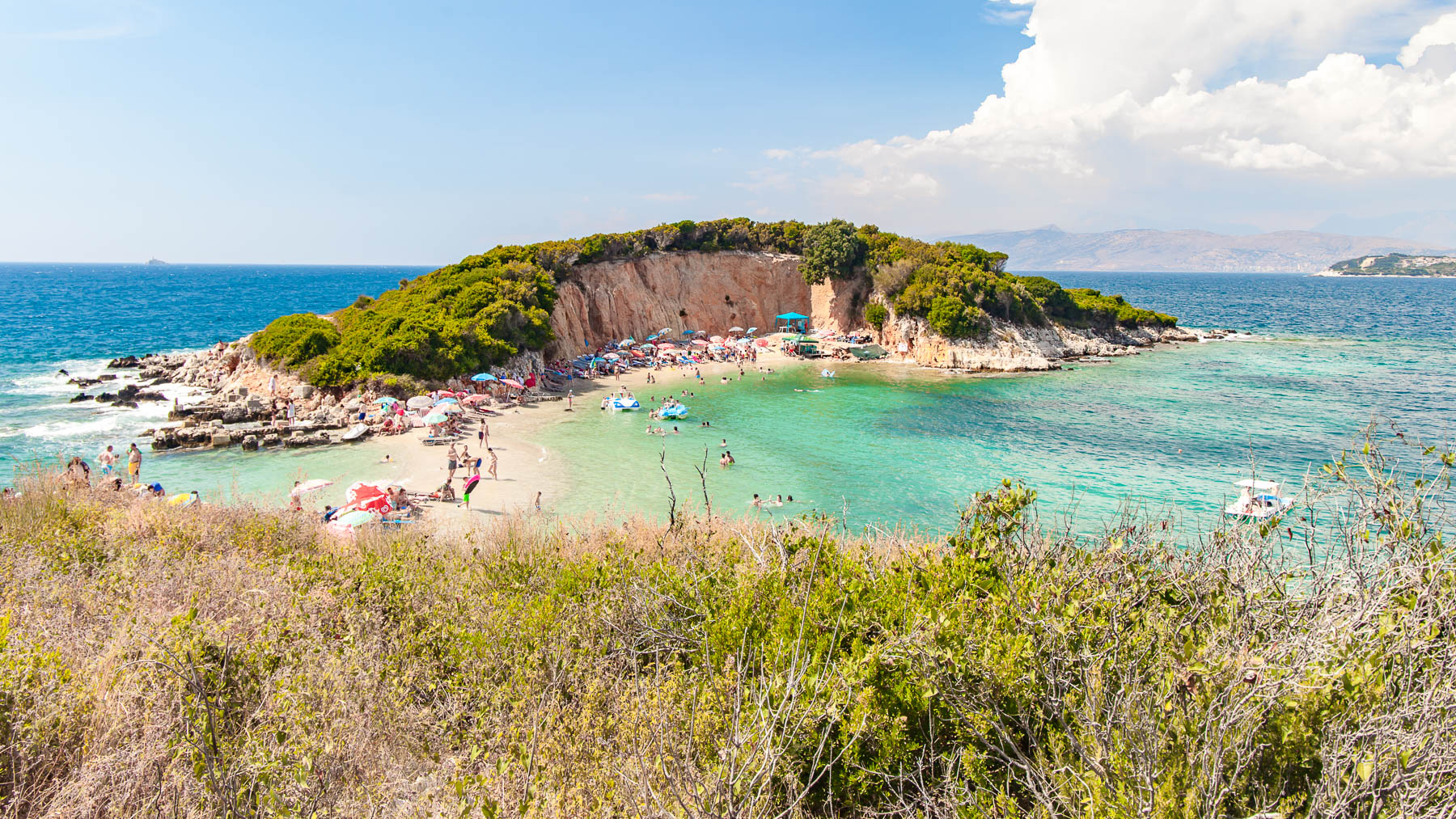

The Albanian Riviera
Best for: Affordable beach experiences with warm waters
Why and when to go? Albania is rapidly gaining popularity as a European beach getaway, transitioning from an off-the-beaten-path location to a travel magazine darling. And the hype is well-deserved; I’ve been raving about the Albanian Riviera since my first visit in 2016. The climate is similar to that of Corfu, making it ideal for a beach holiday from March to October. While the budget-friendly accommodations and dining were once the main draws, Albania’s stunning beauty is now receiving recognition in its own right.
Where are the best beaches? The southern Albanian Riviera extends for about 75 miles along the Ionian Sea, featuring a plethora of beautiful coves, long sandy stretches, and even small islands. The best spots are typically found between Sarandë and Ksamil, where the islands offshore can become quite busy in the summer. Keep in mind that while Albania may be a new destination for many travelers from the USA and UK, the Albanian Riviera has long been a favorite for beach goers from neighboring countries. To find a more serene spot during the summer months, consider heading to beach clubs with limited capacity or exploring the coast further; boat trips to secluded bays are an excellent option.
Activities beyond the beach? Enhance your beach getaway in Albania by delving into its rich culture. I recommend renting a car for a few days to combine beach time with explorations. The historic town of Gjirokastër and the enchanting Blue Eye spring are both just a short drive from Sarandë, and the UNESCO-listed Berat—a stunning whitewashed town hugging a mountain—is well worth the extra travel time.
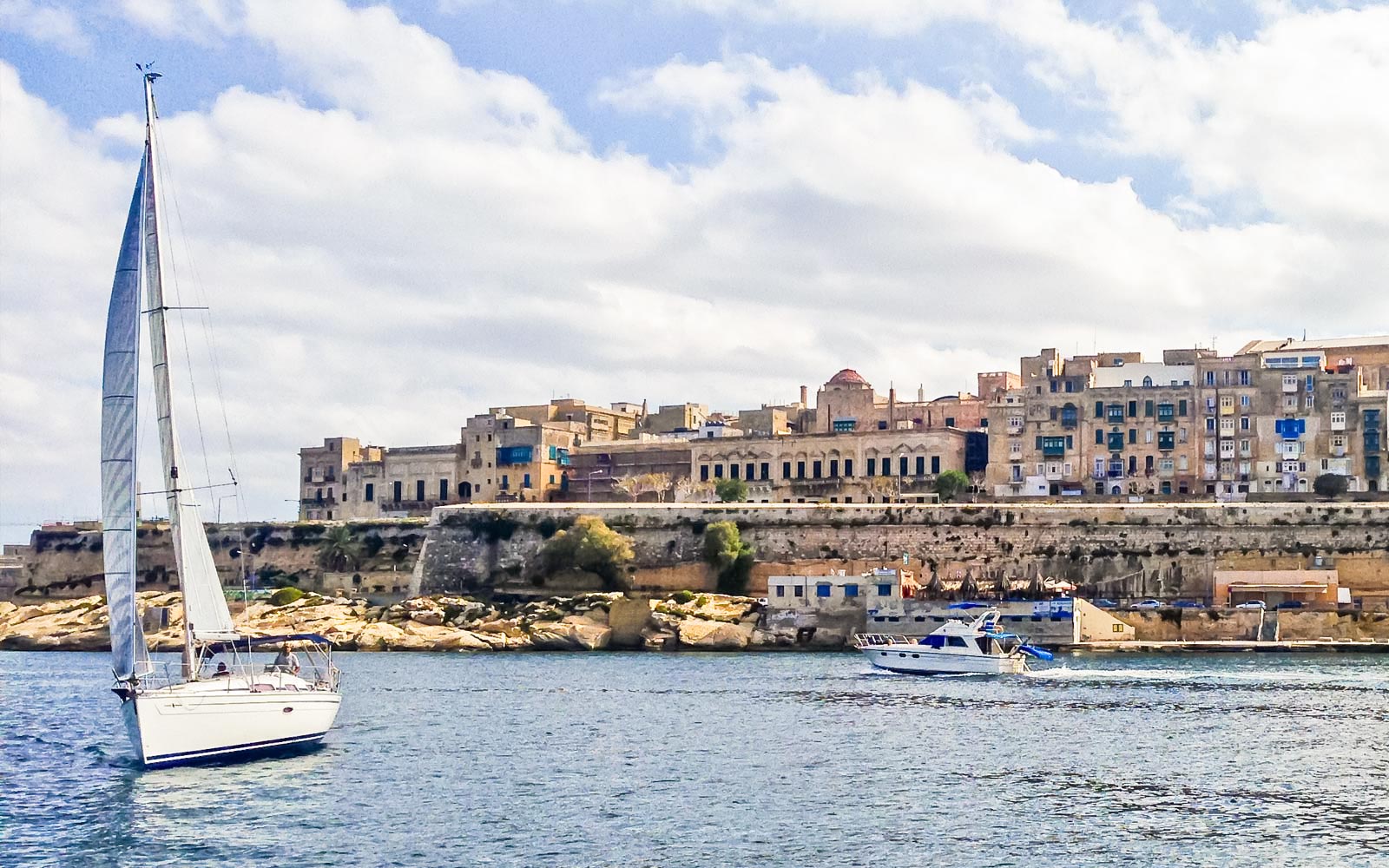

Malta
Best for: A compact island adventure filled with history
Why and when to go? For decades, Malta has been regarded as one of Europe’s top beach destinations, especially among British travelers who occupied the island from 1813 until World War II. As a result, English is one of Malta’s official languages, and you’ll notice many British influences, particularly in the party-friendly areas of St. Julian’s Town. Situated just south of Sicily, Malta is a year-round destination, although my June visit was far more enjoyable than my stormy November trip during a scuba diving course. Malta is a multifaceted destination, offering cultural experiences, family-friendly activities, and nightlife, but the beaches remain the central attraction for all visitors.
Where are the best beaches? Given its small size, Malta allows for easy exploration of its best beaches by car. The public transport system is also quite reliable; on my last visit, I used buses and the ferry to travel between the main island and the smaller sister isle of Gozo. Notable beaches include the secluded San Blas Bay and Dwejra’s unique “inland sea” on Gozo, alongside the popular Blue Lagoon and scenic Golden Bay on Malta proper.
Activities beyond the beach? While it’s difficult to pull away from the beautiful shores of Malta, the island’s rich history deserves at least a day of your attention. Wander through the ancient streets of Valletta, the capital, which dates back to the 1500s, visit the historic capital of Mdina (a *Game of Thrones* filming location), or explore archaeological sites that unveil thousands of years of history.
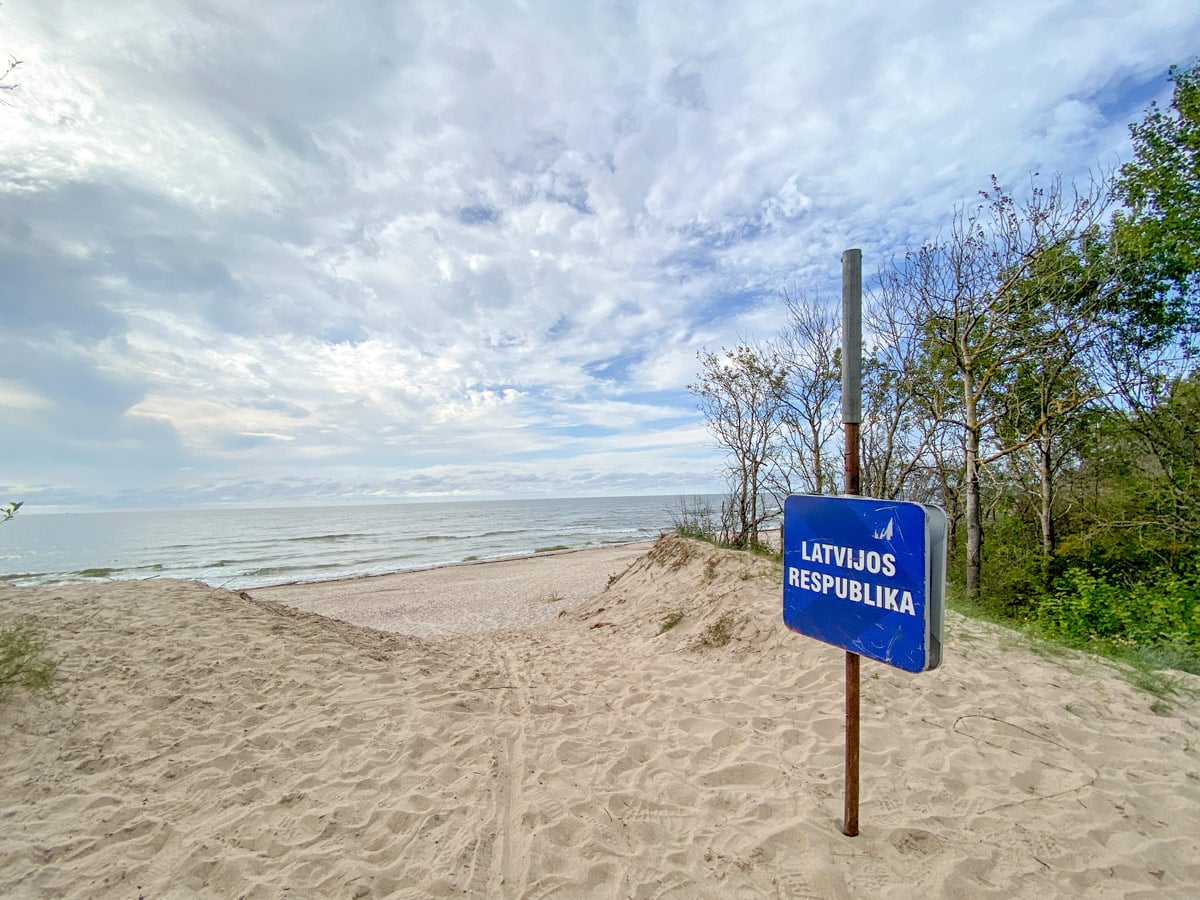

The Baltic States’ Coastline & Trail
Best for: A multi-day coastal hike along lesser-known beaches
Why and when to go? For those seeking an alternative beach experience in Europe, the Baltic Coastal Hiking Trail hugs the coastline of Lithuania, Latvia, and Estonia. This expansive trail stretches roughly 880 miles; while completing the entire route requires over two months, tackling individual sections by bus makes for an enjoyable beach vacation with a twist. However, you’ll want to avoid winter, as harsh weather can detract from the experience. From late spring to early autumn, you’ll find more favorable temperatures (albeit chilly waters) that are perfect for hiking and camping where allowed.
Where are the best beaches? Many may not consider the Baltic States to be among the top beach options in Europe, but for hikers, campers, and those seeking a less crowded experience, the stunning sandy beaches of the Baltic Sea are hard to beat. Highlights of the route include the Curonian Spit—a sandy peninsula connecting to Russia’s Kaliningrad—and numerous beaches in Latvia, where you can enjoy wild beaches and excellent camping near Pape Ķoņi village. In Estonia, the beaches of Pärnu and various nearby islands are highly recommended.
Activities beyond the beach? Covering three countries and a range of beach resorts and towns, you’ll have endless options for exploration. Sample local cuisines, visit the Lithuanian Sea Museum or the Museum of New Art in Pärnu, or finish your journey with a city break in Tallinn.
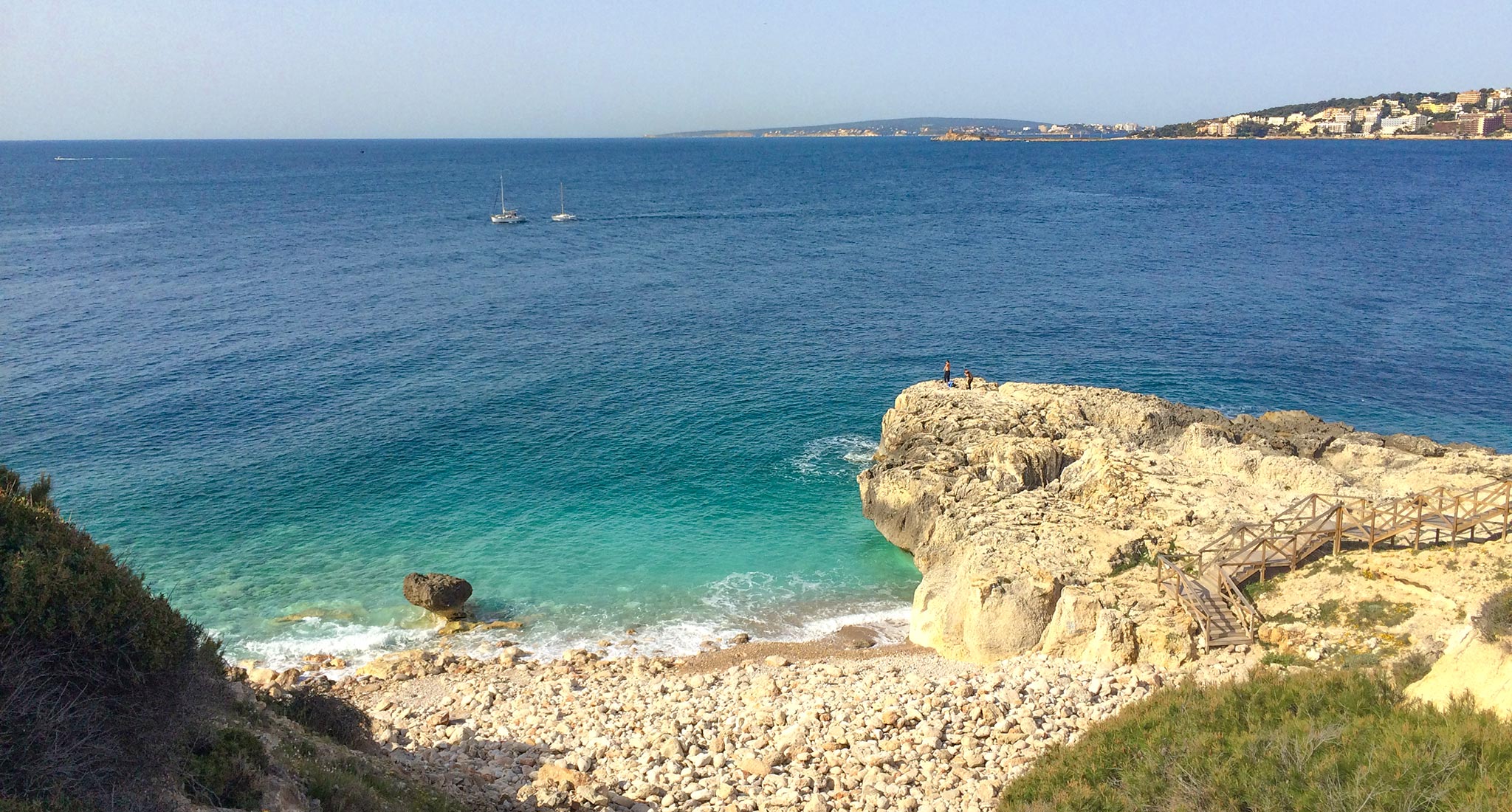

The Balearic Islands, Spain
Best for: A diverse mix, from partying at beaches to tranquil escapes
Why and when to go? The four main Balearic Islands—Mallorca, Ibiza, Menorca, and Formentera—are beloved beach destinations in Europe. While they all feature stunning coastlines, each island maintains a unique identity. The tourism seasons vary by island, but generally, weather remains pleasant year-round. Ibiza is famous for its summer nightlife, while a city break in Palma can be enjoyed at any time, though quieter periods may see some businesses close from October onward. Your choice of island will depend on your preferences, or you can hop between them thanks to convenient ferry connections.
Where are the best beaches? Each island boasts some of the best beach resorts in Europe, and wherever you go, you’ll never be far from a beautiful shore. On Mallorca, don’t miss Cala Agulla and Caló del Moro; Ibiza features stunning Cala Carbó and Las Salinas, while Menorca’s expansive Son Bou and Formentera’s idyllic Calo des Mort set the standard for lesser-visited spots.
Activities beyond the beach? While the Balearics are renowned for their beach appeal, the islands offer much more than sun and sand. Palma de Mallorca, the overall capital, is vibrant year-round with excellent dining options, buzzing nightlife, and fascinating museums, including the majestic 14th-century Cathedral and the rounded Castell De Bellver. The historic wooden train to Port de Soller is another delightful day trip. Ibiza’s fortified Old Town, Dalt Vila, offers cultural experiences during the day, with extravagant parties lighting up the nights.
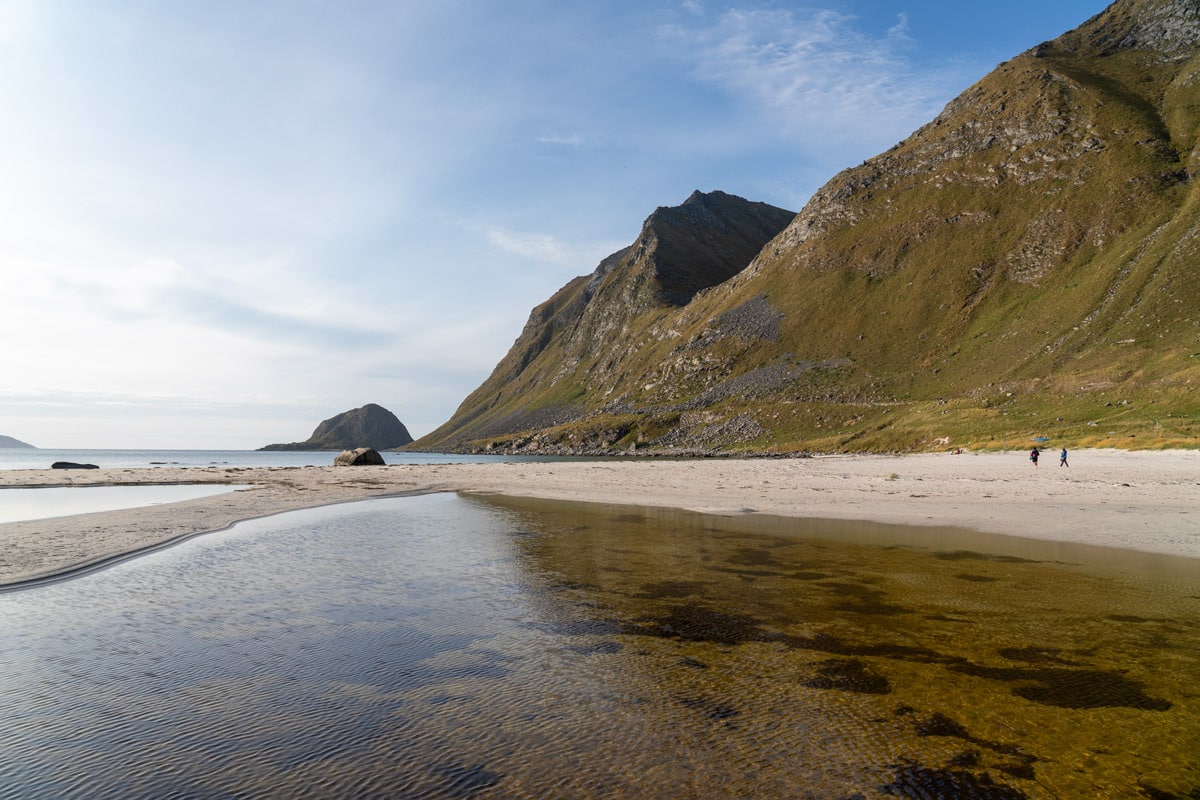

Lofoten Islands, Norway
Best for: Dramatic landscapes and breathtaking hikes overlooking pristine beaches
Why and when to go? The Lofoten archipelago is a breathtaking cluster of rugged, volcanic peaks rising from the blue waters of the North Atlantic Ocean. While this destination might not seem like an obvious choice for Europe’s best beach vacation due to its location above the Arctic Circle, those undeterred by cooler waters will find some of the most cinematic landscapes in Europe here. Summer is ideal for moderate sunbathing, and the primary allure is the opportunity for magnificent hikes with stunning views of the crystal-clear waters lapping the shores. Arrive via scenic trains for exploration through impressive backdrops in Norway or Sweden.
Where are the best beaches? Lofoten’s beaches are known for their soft, sugary sand and spectacular hiking trails leading to breathtaking lookout points. The striking twin beaches of Hauklandstranda and Vik are easily accessible from Leknes, while the picturesque Kvalvika Beach looks stunning from the nearby Ryten hiking trail. Bunes Beach, accessible only by boat from Reine, offers an exclusive escape from the crowds.
Activities beyond the beach? Simply being on the Lofoten Islands is a mesmerizing experience. At every turn, you’ll discover another awe-inspiring view, whether it’s soaring peaks, traditional turf-roofed rorbuer cabins, or wintertime displays of the northern lights. Take a leisurely day to learn about the old fishing communities at the museum in Å, or dive into an adventurous hike around Reine. You can choose to relax in a resort hotel or embrace adventure—this beach paradise meets all preferences.
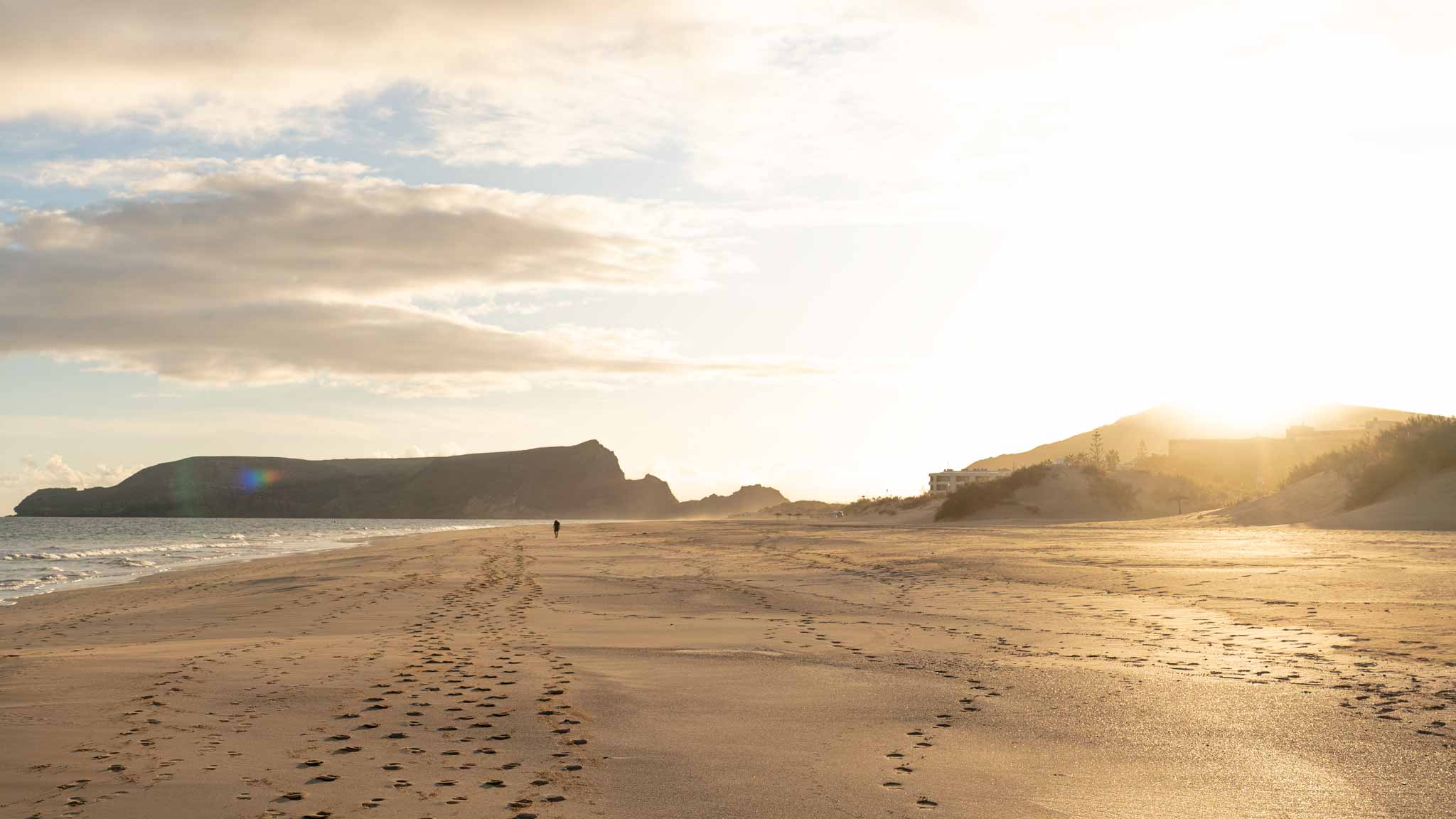

Porto Santo, Portugal
Best for: A serene island getaway paired with adventure on Madeira
Why and when to go? Porto Santo is essentially the sandy counterpart to Madeira, Portugal’s lush adventure island in the Atlantic. Here, you’ll revel in the stunning nine-kilometer stretch of golden sand—quite the contrast to Madeira’s dark volcanic shores. Porto Santo is more accurately described as an island with a beach rather than the other way around, which truly makes it one of Europe’s best beach destinations. Days here are marked by lounging in the sun, splashing in rock pools, and enjoying sunset cocktails at beach bars. With a pleasant climate year-round and few tourists outside of peak season, it’s an ideal choice for a bargain off-season beach retreat.
Where are the best beaches? Porto Santo Beach, which appears to stretch endlessly, is the main beach destination on the island. It extends from the ferry terminal and the main town of Vila Baleira all the way to the rocky coastline at the southern tip. Along the beach, low-key resorts offer spa services or family-friendly accommodations, so you’re never far away from a refreshing dip on a warm morning.
Activities beyond the beach? The whole island of Porto Santo is a protected biosphere reserve, emphasizing the importance of preservation for its native flora and fauna. When you’re ready to take a break from the beach, venture into the nearby hilly terrain for hiking or biking along scenic trails. Seek stunning views from the old-fashioned windmills, venture to the Porto das Salemas Natural Pools, or be amazed by the basalt formations at Pico de Ana Ferreira. In Vila Baleira, indulge in seafood cuisines or explore the museum in Christopher Columbus’s former home. There may not be a plethora of attractions, but it’s precisely the tranquility of Porto Santo that makes it special. If you’re craving a bit more excitement, Madeira is only a three-hour ferry ride away.
This list of top beach destinations in Europe is subjective, and there are countless others worth mentioning: the breathtaking Canary Islands in Spain, The Hague in the Netherlands, sun-soaked Sardinia, and Corsica… Europe truly offers an endless array of stunning seaside retreats.
